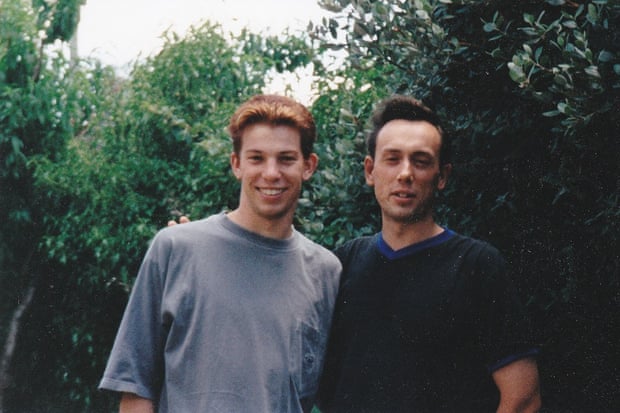Yon February 1997, at midnight, I was riding my pushbike through a park on my way to Canberra’s city center when I somehow became sprawled on the ground, my palms bloodied and covered in gravel. Earlier I had been drinking with friends; now, so it seemed, a fence had come out of nowhere.
Every week that summer I had been going to Heaven, Canberra’s only gay nightclub. I had told no one about my nocturnal adventures. Nor had I met anyone. I had grown up listening to the Cure, not Madonna. Rather than go shopping, I could talk for hours about the Irish novelist Colm Tóibín. Sitting around a campfire was my thing, not pumping weights.
“Go home,” I told myself. “This is not for you. And you’re drunk.”
But, driven by a subterranean need, I picked myself up and kept going.
Half an hour later, a figure, slim and lithe, appeared on the dance floor. Doc Marten boots. Tight black jeans. A black, ribbed top, the sort Depeche Mode would have worn in their younger years. Bleached blonde hair. and he had moves. (I danced like a robot whose batteries were running out.)
Two weeks later, Tim moved into my flat.
Two months after that, we brought home a Dalmatian puppy.
During our third year together, we bought a car. Then a house.
By 2002, however, it became obvious that we were two very independent people. Claustrophobia had set in. The relationship ended.

Although I was now 32, I wanted to have another go at the gay scene. I did not want to meet anyone; I wanted to go home with guys and not exchange phone numbers, or even names. I lost weight. I wore nightclub clothes – tight white tops and flared denim jeans. I only listened to dance music.
I discovered ecstasy.
In 2003, two friends and I went to Sydney for Mardi Gras. Before the parade we drunk bottles of champagne; we took a pill each. In a car park, a joint. Just before we went through the party turnstiles, we took more pills.
Minutes later, my legs buckled.
As topless men danced around me, abs and pecs lit up by strobe lights, I exited the venue – in a wheelchair.
In the medical tent, a softly spoken doctor laid me down on a gurney.
I have held my hand.
Three girls in their late teens appeared; apparently one of them was experiencing hot patches on her brain. Then a man in his early twenties: the medical team laid him on a gurney too. “He’s turning blue,” said one of the doctors. “Call an ambulance.” Twenty minutes later, I heard the same doctor say into his mobile phone from him. “We really need that ambulance.”
All the while, the kind doctor dropped by to hold my hand.
By dawn I could stand again.
“Take care,” said my doctor. “You were as pale as a ghost when you were brought in. We were very worried about you.”
I found my friends.
Down at Bondi, the sun a burning ball over the ocean, I texted Tim and told him what had happened. “I hope you’re OK now,” he replied.
On the train back to Canberra, I listened to Ministry of Sound’s Chillout Sessions Volume 3, bought on Tim’s recommendation. It included an acoustic version of Another Chance by Roger Sanchez, the lyrics little more than the title repeated over and over.
I looked out the window and, in that moment, felt a soft but unmistakable warmth. I knew then that with Tim, I had experienced love. It had been imperfect and, at times, bewildering, but it had also been real.
Three months later, Tim and I got back together. This time we promised each other to take things slow, to see each other every week, but also to respect – indeed encourage – independence.
Twenty years later, that is what we are still doing. We live in towns an hour’s drive apart, and see each other every week.
Our Saturday evenings these days are spent on the couch, a blanket over our legs and torsos, a whiskey glass in one hand and a piece of chocolate in the other, something streaming on the TV. As always, around 9pm, Tim will turn to me and say, “Is it time for bed now, pumpkin?”